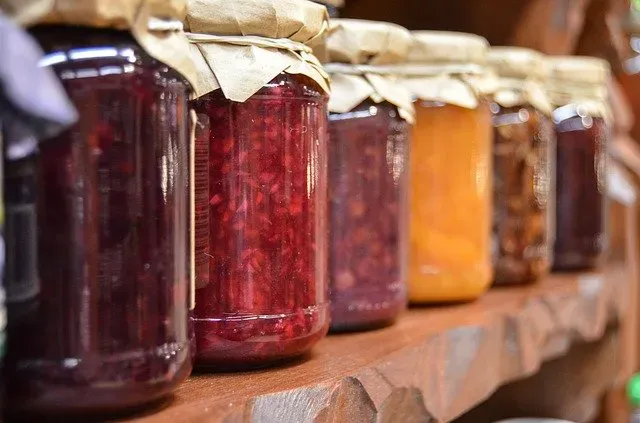Marmalade: a bit of Portugal in every jar
Written by delinete-rocha on Sept. 3, 2021, 3:40 p.m.

Marmalade or Marmelada?
Both. The English Marmalade inspired the Portuguese Marmelada. Or, might it have been the other way around?
In any case, Marmelada is to the Portuguese, what Quince Cheese is to the English, and Membrillo, to the Spanish.
Marmelada is made of quince, and the Portuguese word for quince is Marmelo. Whereas Marmalade, which is made of oranges, does not take its name from the fruit. You can probably see where it is heading to, right?
Quince is abundant in Portugal – it does grow on trees here. The fruit fills the air with its delicious scent, and gardens with a bright golden-yellow color. sadly, this only lasts for a few months in a year, though.
Despite of how tempting the ripe fruit may look, one can not eat them raw, straight from the tree, as we would like to. Quince only tastes as good as it looks, after cooked. And especially, in the form of Marmelada, keeping its perfectly soft texture and complex sweet flavor all year round.
Marmelada is drama?!
Although the Portuguese can enjoy their Marmelada as a spread, the mature version, that can be sliced like a cheese, is the most common. Either way, our national “quince cheese” is on its best when paired with cheese. To this perfect, sugary-salty-tangy flavor match, we gave the name “Romeo e Julieta”, after Shakespeare’s tragedy. The Portuguese number, though, ends up on a much more satisfying, sweet note.
There are records of Marmelada in Portugal from as early as the year 1521: Pedrinho, a play character by the dramatist Gil Vicente, dreams of having so much Marmelada at home, that his mother even gives him some. Oh poor Pedrinho…
From Portugal with Love
Londoners first sampled Marmelada somewhere in the 16th century. And guess who brought this in? the Portuguese themselves. The British, having tried the jam and realized how delicious it was, went on to try and make Marmelada out of whatever fruit was readily available. Never mind the name.
Marmelada turned into Marmalade
Since the 17th century, England has been successfully producing its own supply of orange Marmelada and calling it Marmalade. Despite its bitterness, the spread is still much loved among Britons. So much so, that the famous English Paddington Bear’s favorite, and only, sandwich filling is Marmalade; and, there is even an annual English Marmalade festival, held in Cumbria.
Marmelada becomes Goiabada
In the New World, the Portuguese also found a fertile ground for their Marmelada. Just like the English, the Brazilian embraced and adapted the delicacy, and called it Goiabada, from Guava. Like everything in Brazil, which is either saltier or sweeter than its European counterpart, this is sweeter. Following the British fashion, the national Marmelada also holds its own festivals.
On a finishing note, I do believe that, both the English Marmalade and the Brazilian Goiabada, have Portuguese roots. I also think that, in these last 500 years, the Portuguese have kept their hand for mouthwatering sweet delicacies. Thus, following the steps of the international Marmelada, there is the delicious and well traveled Portuguese pastry Pastel de Nata.
Thank you for reading. We look forward to hearing back from you. Leave us a comment, share with us what you think about this.
Published on Sept. 3, 2021, 3:40 p.m. by delinete-rocha
Create an accout
orlogin
to leave comments!Copyright © Ecorustics
